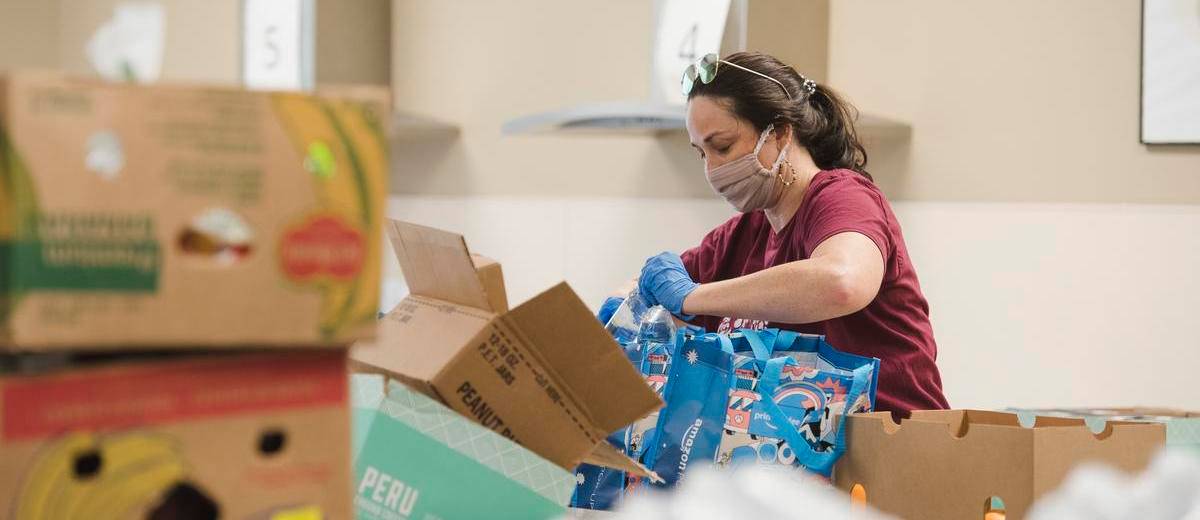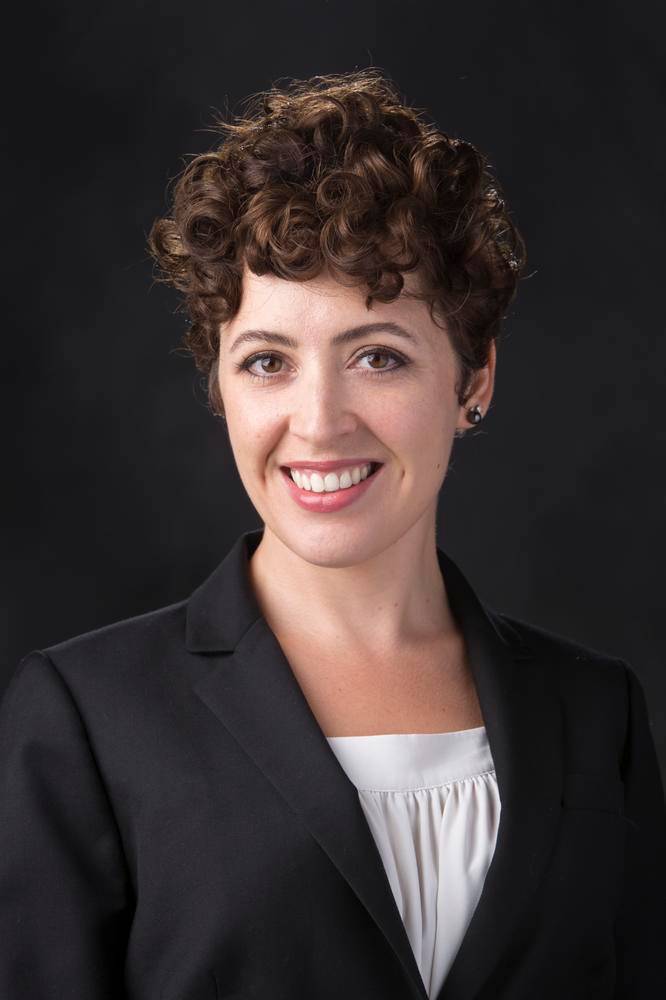Nutrition professor’s research seeks to expand how the government measures food insecurity
Julie Cooper | January 29, 2021

Dr. Cassandra Johnson wants you to know that she isn’t looking to upend the U.S. Department of Agriculture’s (USDA) means of measuring food insecurity, known as the Food Security Survey Module (FSSM). Her recent research paper, “The Four Domain Food Insecurity Scale (4D-FIS): development and evaluation of a complementary food insecurity measure” is intended to broaden what counts as food insecurity and how we assess food insecurity in the U.S.
And she is not the only one pushing for changes in how food insecurity is measured.
Food insecurity is a phrase that Americans are hearing more and more – thanks in part to the COVID-19 pandemic and all that it has wrought. Loss of jobs and loss of paid hours certainly have added to that. While this research was completed before the coronavirus pandemic, Johnson did discuss the lines of cars waiting to pick up food donations around the country, including in Texas and our communities, and acknowledged emergent research that shows a dramatic increase in food insecurity. “The number of people who suffer with food insecurity has more than doubled since April and we know that some households, like Black and Latino households, have been hit harder by food insecurity,” she said.
For Johnson, an assistant professor in Texas State University’s Nutrition and Foods Program, the research was born of her doctoral thesis from the University of North Carolina, Chapel Hill and a larger research project called “Voices into Action: The Families, Food, and Health Project at North Carolina State University.” This research paper appeared in the December issue of Translational Behavioral Medicine. Food insecurity, Johnson explained, “is way more than worrying about not having enough to eat.” And while the USDA’s Food Security Survey Module (FSSM) “is a valuable tool for measuring food insecurity, it has limitations for capturing experiences of less severe food insecurity,” she said. “The 4D-FIS can identify people who might be missed with a more conservative measure like the FSSM.”

The four domains that Johnson considered in this complementary measure, the 4D-FIS, are quantitative, qualitative, psychological, and social. She explained that people often think of food insecurity as empty refrigerators and pantries, which is extreme quantitative deprivation. But people don’t always think about the other experiences of food insecurity like reductions in the quality of foods or overall diet, anxiety, or stigma. The 4D-FIS is designed to pick up on the full range of experiences. The questions that she used with the participants, which included Black, Latina and white women in North Carolina, reflect these four different domains. Johnson described the group of participants as caregivers, mothers and grandmothers who were caring for children between the ages of 2 and 9, with household incomes below the federal poverty line. After joining the research study at the beginning, “just over half were classified as ‘food insecure’ based on the USDA FSSM scale.”
Her research group asked participants to answer 16 questions like these to understand the experiences related to the four different domains:
- How often did you eat something small or a snack instead of eating a full meal because there was not enough food?
- How often did you eat the same food or meals over and over again because there was not enough food?
- How often did you feel anxious or stressed because you did not know how you would get enough food?
Participants were also asked to respond to statements such as: “I felt embarrassed or hid my food situation from others” and “It’s not fair that some people have all the food they need, and I cannot have the food I need.” She stressed the importance of including questions in the 4D-FIS that went beyond quantitative deprivation or reductions in the amount of food consumed. Especially when we consider the relationships between food insecurity and mental health and well-being, we need a measure that captures the full range of experiences, especially those related to the psychological and social domains.
The main findings, Johnson said, are providing support for the proposed model with four factors, or domains, of food insecurity and preliminary evidence for the validity of the 4D-FIS.
In advocating for the new measures to be added by the USDA, Johnson said she hopes this will “throw a wider net to capture anyone who is experiencing food insecurity, not just the most extreme cases.” Having complementary measures, she explained, would help “provide data so we can identify opportunities and actually allocate the resources to get people what they need to be food secure.”
In 2018, the School of Family and Consumer Sciences partnered with the Hays County Food Bank and created Bobcat Bounty, a student-led and on-campus food pantry for the Texas State community. Bobcat Bounty serves students and staff to reduce food insecurity on campus and focuses on positive client experiences. The grocery store-style pantry is run by students under the direction of Dr. Lesli Biediger-Friedman and Hannah Thornton, faculty in the Nutrition and Foods Program. Bobcat Bounty is also part of the Food Security Learning Community and used as a research lab to engage students in research about interventions to support food security with college students.
“When I started this research, I would have never imagined that the work would be published during a pandemic as food insecurity has skyrocketed. The timing feels right. Hopefully, others will be able to use this measure to meet the needs of their communities and advocate for policies and programs to prioritize food security for everyone.
“Equity (in nutrition, in all things) is good for everyone,” Johnson said.
Share this article
For more information, contact University Communications:Jayme Blaschke, 512-245-2555 Sandy Pantlik, 512-245-2922 |